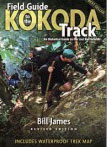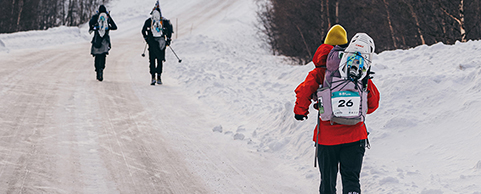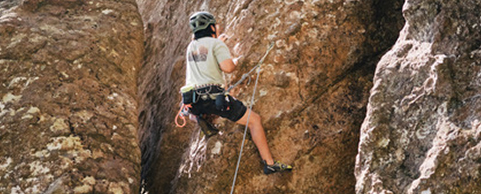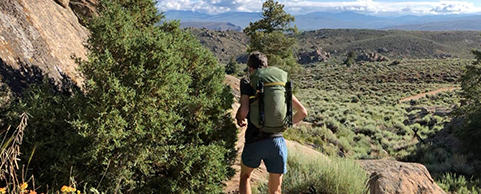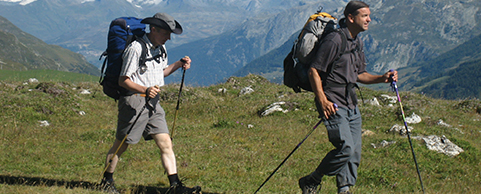The Pilgrimage to Kokoda - Why it’s so close to the Aussie Heart
First up, let’s talk a little about why today, so many Australians aspire to trekking the 96 kilometre track.
In 1992, Prime Minister Paul Keating knelt and kissed the ground at Kokoda Station at a ceremony marking the 50th Anniversary of the Kokoda campaign. He said,
“There can be no deeper spiritual basis for the meaning of the Australian nation than the blood that was spilled on this very knoll, this very plateau, in defense of Australia. This was the place where I believe the depth and soul of the Australian nation was confirmed."
In the years that followed, Australian TV audiences were exposed to a number of documentary style shows depicting well known Australian personalities struggling over the Kokoda Track. At that time, for most Australians the Kokoda Track was just a name and very few knew or understood the importance of the battles fought for every inch of the Track between July 1942 and December 1943.
Bomana War cemetery Port Moresby.
Throughout Australia in the late 90’s and early 2000’s we were already showing the signs of increased nationalism. Australian fighting men and women had been appearing nightly on our TV’s side by side with our American allies fighting in wars from Iraq to Afghanistan. Our soldiers were in East Timor and if there was a fight anywhere we seemed to always be there. Following the lead, but to a much lesser degree then Americans, Australians were, maybe unknowingly, slowly caught up in a growing sense of national awareness, very much influenced by the actions of our soldiers and the influence of TV.
Numbers attending Anzac Day dawn ceremonies grew dramatically throughout the late 90’s. Our streets are now lined 5 deep with cheering people as our veterans march proudly every Anzac Day.
In 2002, our then prime minister, John Howard opened the stunning memorial at Isurava battlefield on the Kokoda Track, it was only a matter of time before the flood gates of interest opened and Australians started to head to PNG to trek the Kokoda Track. The Kokoda Track was rapidly becoming an iconic symbol of Australian pride and nationalism.
The route of the Trek. Inspecting his uncle's gravesite at Bomana War
cemetery Port Moresby.
The motivation behind Kokoda Track trekkers is very interesting. After 12 years taking Australians over the Track, we have a very clear picture of who treks and why. Many trek in memory of family members who fought and of course many of whom died in battles on the Kokoda Track and elsewhere in PNG. Others seek an understanding of the heroic Kokoda story which vividly comes to life once on the Track. The Track, littered with relics, has been described as a “military obstacle course”. Others do so for the physical and mental challenge knowing the ruggedness of the terrain and inspired by the Track’s legendary challenges. Even as a stand-alone bushwalk, the Kokoda Track is well worth the walk as it truly rates as one of the most beautiful jungle bushwalking experiences in the world. Interesting, challenging trails, mixed with stunning scenery and an inspiring cultural interaction with the local people, all mixed with the Kokoda story combine to make the Kokoda Track a powerful experience. Plus, add to all these motivations, that we now live in an era where bucket lists and personal challenge and achievement are valid and accepted part of our Australian lifestyle, Australians in increasing numbers are realising that trekking the Kokoda Track is just not something experienced bushwalkers alone should attempt. Aussies realise that anyone with the right motivation, training and health can enjoy the Kokoda experience.

The route of The Kokoda Trek showing key points of interest.
There are many history books available that detail the mind boggling facts and 1000’s of fascinating human interest stories that make up the Kokoda legend, however, the single most important fact anyone walking the Track needs to know before they go is that every Aussie soldier who fought on that Track believed, that if they did not stop the invaders on the Track that they would push on through and end up on the front steps of their family homes back in Australia. It can be easily argued, that for the first time ever in Australian history, we were fighting directly to protect our country.
Professional trekking companies trek the Track in 9 days, 8 nights, which is a sensible itinerary, allowing for unexpected problems and also provides the correct balance between exertion and recuperation for most trekkers. The Track can be walked North to South, or, South to North with Kokoda Station on the northern side of the Owen Stanley ranges marking the northern start and Owers Corner on the southern side of the ranges marking the southern start. The North South route is our favourite, as it allows an easier acclimatising start to the trek for most trekkers and follows an easily understood timeline following the invasion and advance of the Japanese, our strategic fighting withdrawal and finishes virtually at the point where the Japanese began their retreat to the beaches where they were ultimately defeated.
With the support of a dedicated trek crew made up of men from villages along the Track and lead and informed by professional Australian guides, the Track can be travelled safely and happily by just about anyone who prepares properly. Both men and women from all walks of life and of all ages trek, as well as school groups, company teams, military teams, fund raising groups, sporting clubs, in fact, the Track is there for all Australians to experience and enjoy, it is not just for those only on a military pilgrimage or for military historians. Today all Australians are enjoying this important part of Australian history.

Crossing the Brown River on a makeshift bridge.

Trekkers heading up a steep and challenging escarpment.
Once on the Track, the conditions experienced by our soldiers in 1942 start to become clear. The Track on any trek can be all or some of these experiences. It can be so wet that the rain hurts when it hits you, it can be so muddy in places that your boots can be sucked right off your feet if they are not laced tight enough. Creeks and rivers can be shallow and gentle or deep and difficult to cross, the sun can burn right through your clothes and the humidity be so high that you are never dry. Nights can be cold, days long and hot and include steep up sections that test your fitness mixed with downhill sections that make your legs wobbly and knees hurt. For many trekkers, camping in tents and eating camp meals and washing in creeks is a new experience and takes several nights to adjust . However, 99% of our trekkers make that adjustment and complete the Track with a justifiable feeling of achievement. When you walk under the finishing arch at Owers Corner you can be excused for feeling the proverbial, “10 foot tall and bullet proof”.
2015 marks the 100th Anniversary of the landing at Gallipoli and the birth of the Anzac spirit. Back Track Adventures, a specialist trekking company will feature 6 unique 2015 Anzac day treks with dawn ceremonies on Anzac day at Brigade Hill and Irobaiwa Village. These ceremonies will be the most remote Anzac day ceremonies held anywhere in the world. As well, each 2015 trek will commemorate a significant Australian military event from the last 100 years. The qualities of mateship, sacrifice, endurance and courage displayed by our soldiers on the Track and inscribed on the pillars at the Isurava battle field, are the same characteristics displayed by our fighting men and women deployed in hotspots worldwide today. A Kokoda Trek in our 100th Anniversary year of the birth of the Anzac spirit will be an experience you will remember with pride for the rest of your life.
Trekkers enjoying a concert at Efogi Village. 39th Militia Btn parading at Menari Village before their withdrawal from the Track.
Though you do need to make a small investment in some quality gear items such as good walking boots and other particular items of equipment, specialist outfitters, Bogong Equipment are easy to approach and their knowledgeable staff will ensure you are professionally equipped. If you wish to walk the Track in 2014, or in 2015, you can attend a free video and information night, conducted by trek guide, Jim Drapes and held at Bogong Equipment on Wednesday 09 July or Wednesday 12 November. Everything you need to know will be discussed. For gear and clothing information talk with the experts at Bogong Equipment and to register to attend a free information session or download a brochure go to the website, www.trekkokoda.com.au.
The Kokoda Track is an incredible experience. Every Australian should walk the Track.










